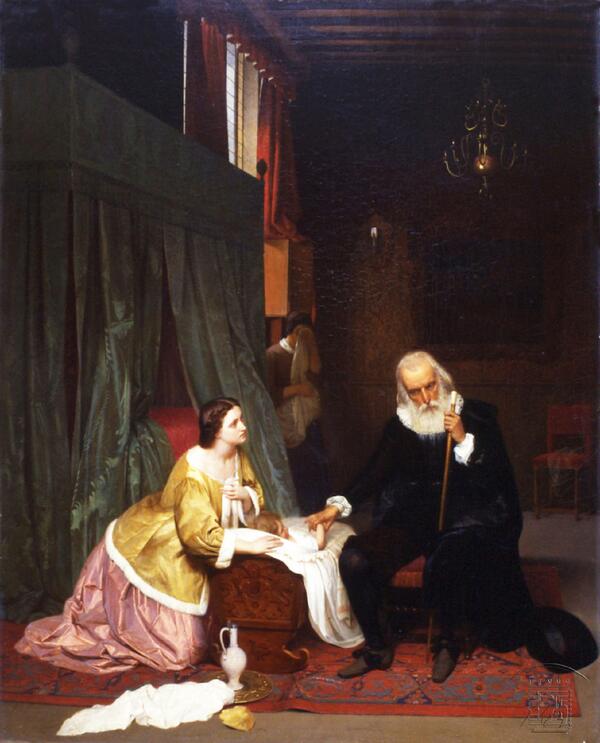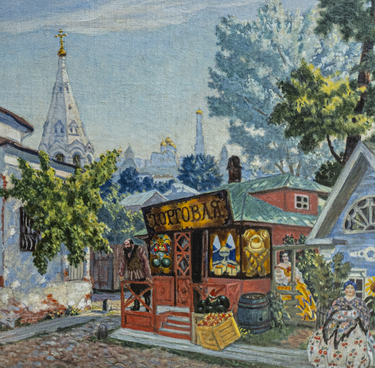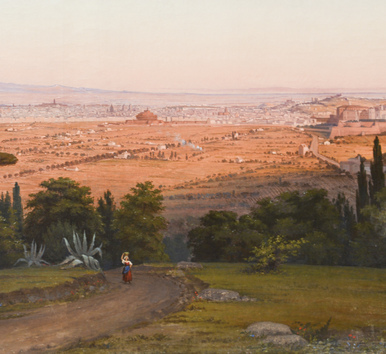“The Doctor’s Visit” is a painting by the Russian artist Gustav Budkovsky. It is a rather unique artwork, as there are less than 20 known paintings by this artist.
Gustav Yakovlevich Budkovsky was born on June 5 or 6, 1813 in Livonia — the former Swedish dominion, the territory of which corresponds to modern Estonia and Latvia. The future artist was born as Gustav Daniel. When he came to Russia, he added the patronymic Yakovlevich to his name. He attended classes at the Imperial Academy of Arts as a non-matriculated student. In the 1840s, his teacher was the famous Karl Pavlovich Bryullov. In 1845, Gustav Budkovsky received the Small Silver Medal (apparently, his only one) for the painting “Finnish Improvisers”. He lived in poverty and in 1846 received an allowance that was granted to him “considering his success in painting and extreme financial distress” at the request of Karl Bryullov. Ten years later, in 1855, Gustav Budkovsky was accepted as a member of the Academy for a painting depicting “a young widow holding her child.”
This painting, created by Gustav Budkovsky in
Europe, has several titles — “The Doctor’s Visit”, “A Doctor Visiting a Sick
Child”, and “A Sick Child”. As a representative of the Russian school of
painting, he submitted two paintings “A Sick Child” and “Orphans” to the 1862
International Exhibition in London. During that period, Pavel Mikhailovich
Tretyakov was traveling across Europe, and at the end of August, he visited the
London exhibition. In his pocket notebook, among the notes on travel expenses
and names of artists displaying their paintings, he made the following record,



